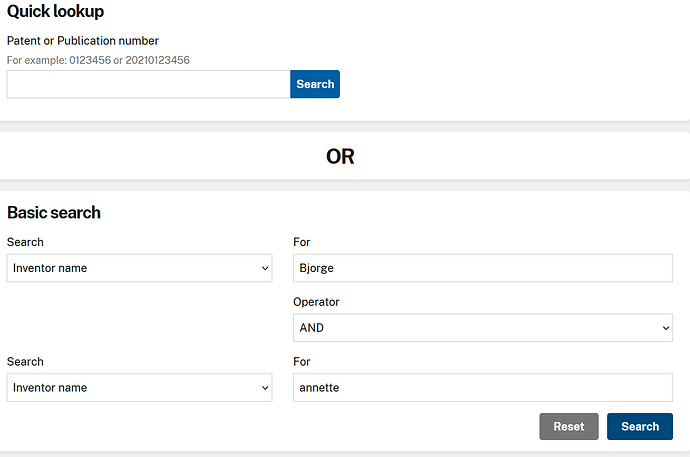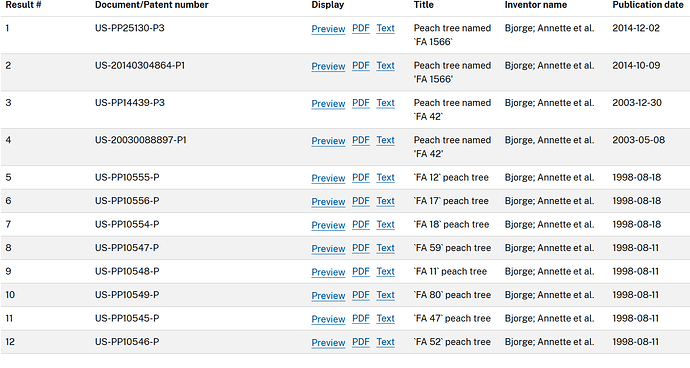The USPTO has some decent search tools now. I used to check on the status of plant patents by searching the name of the plant followed by “pp” in quotes. Or just the name with patent in quotes. That would get the number which I could then enter into the USPTO search tool. Plant patents all have pp before the number, so you must use the pp prefix to find the patent. Use the basic search tool if you know the pp number. Note that for plant patents which are less than 10,000 you have to add a zero to the number to make the number 5 digits.
For example, if I wanted to search for Paul Friday’s Flamin’ Fury PF 23, using the basic search tool, which has a PP number 8164, I would type in PP08164 in the basic search tool.
Plant patents expire 20 years after the date the application is filed (not the date the patent is granted).
The USPTO now has some better tools which may help you.
If you know the inventor of the plant you are looking for, you can find it that way. Below is the link for the basic tool using the patent number, or basic search using inventor name.
https://ppubs.uspto.gov/pubwebapp/static/pages/ppubsbasic.html
For example, if I want to look up all the peaches patented in the Stellar series, I happen to know the inventors are the Bjorge’s (breeding program started by Annette’s father Jim Friday). So I select inventor in both left hand boxes, and type in Bjorge and Annette in the boxes on the right. It looks like this:
and gives me a result which looks like this:
This is helpful because they use FA (FA stands for their orchard name - Fruit Acres) as a prefix for their patented selections, not the trade name.
For example, if I wanted to know the patent info for their newest selection called “Sweet Star” peach, I wouldn’t be able to find the patent because it’s not listed as Sweet Star. However using the inventor search, I see their latest selection is FA 1566. Plugging that in an internet search yields the name “Sweet Star”.
Admittedly it’s a bit clumsy to go through all that, but at least its searchable that way.
Something much easier would be searching patents by Chris Floyd Zaiger. In that case some of his patents are listed under Chris Zaiger and some under Floyd Zaiger, so you have to look under both names to see all his patents. But he generally listed the actual Trademark name as the patent name, so you don’t have to track down the trade name, as in the case of Fruit Acres selections.

